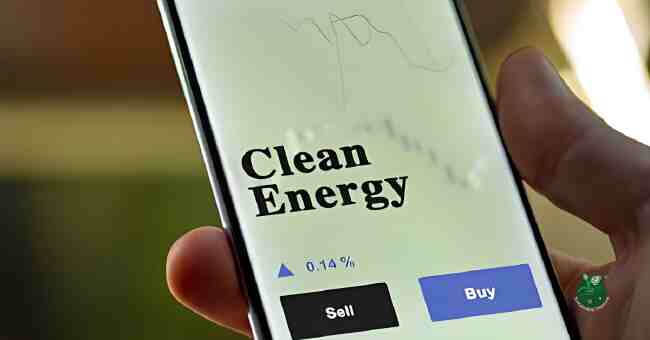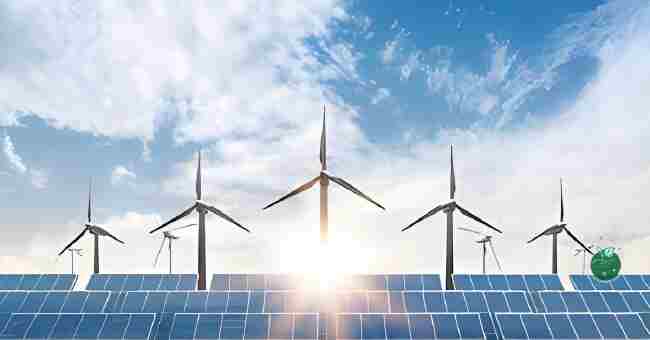Table of Contents
Is clean energy a good investment? After years of hype and strong returns, 2022 was undoubtedly a reality check. My own foray into solar stocks followed an enthusiastic magazine cover proposing these names were the future.
I got burned when inflation shocked markets and supply crises hit. Still determined to support renewables and see upside, I resolved to better evaluate risks.
By assessing real obstacles these vital technologies face alongside growth forecasts, my positioned turned around. While no means smooth sailing, insights on navigating volatility ultimately rewarded my patience.
In this post, we’ll analyze both the bull and bear case for renewables. We’ll look at key factors impacting the sector, from supportive policies to supply chain woes.
By weighing the pros and cons, you’ll get a balanced perspective on the outlook.
Our main focus will be assessing:
- The long-term growth prospects for clean energy
- Challenges currently facing the industry
- Whether valuations still make sense after the pullback
- Ways to manage risk exposure in this volatile sector
While risks remain, the expanding global commitment to net zero emissions and energy security points to a promising clean energy investment outlook this decade. But expect some bumps along the way.
Now let’s dive in.
The Accelerating Transition to Clean Power
Before diving into recent headwinds, it’s important to understand the broader context. What’s driving growth in renewable energy adoption?
There are several key interlinked factors:
- Falling technology costs
- Ambitious decarbonization policies
- Corporations embracing ESG
- Supportive incentives and investment
Firstly, costs for solar panels, wind turbines and batteries have plunged dramatically. This expands renewables’ cost-competiveness for generating emissions-free electricity.
Solar PV module prices fell 89% over the past decade, while onshore wind turbine prices are down 47%.
Alongside tech advances, governments globally have enacted ambitious decarbonization policies and targets:
- Over 150 net zero pledges covering 90% of world GDP
- Biden’s U.S. target of 100% carbon-free electricity by 2035
- EU aiming for 40% clean energy by 2030
Corporations have also begun embracing ESG principles more broadly:
- One-fifth of world’s 2,000 largest public companies have pledged some form of net zero target
- Almost 30% of Fortune 500 firms have committed to 100% renewable power
- Over 290 global companies have now signed renewable energy deals totaling 100 GW of demand through 2030
And there’s huge investment lining up behind renewable infrastructure:
- Total clean energy investment projected to top $1.3 trillion per year through 2030 to achieve net zero – IEA
- U.S. Inflation Reduction Act includes over $370 billion for emissions cuts and energy security
This policy support and increasing competitiveness is reflected in surging deployment:
- Almost 90% of new power capacity added in 2022 was renewable – IEA
- Total global renewable power capacity on track to almost double from 2022 to 2027
So while headwinds have challenged stocks recently, the broader transition to sustainable energy keeps advancing at pace.
Why the Investment Case for Renewables Remains Strong
Given the astronomical projections for clean energy infrastructure over the coming years, why does the long-term logic to gain exposure still hold?
There are 5 key pillars underpinning the bull case:
- Energy security benefits
- Mainstream adoption driving sustained growth
- Declining costs translating to higher margins
- Supportive regulations and incentives
- Vast investments required for net zero
Firstly, renewables bolster energy security and independence by utilizing abundant domestic resources. With energy supply vulnerabilities being exposed recently, governments are prioritizing growing clean power.
For example, the U.S. aims to roll out 50 GW of additional renewable capacity to ensure stability. And the EU is targeting 45% renewable electricity under its REPower plan. This focus helps de-risk future growth.
Secondly, the embrace of sustainability across industries is still gaining momentum. Renewables are expanding beyond niche status, becoming the preferred electricity choice for corporations and investors alike.
Brands leading this charge include Apple, Amazon, Google, General Motors, Visa, PepsiCo, McDonalds and IKEA.
Meanwhile major asset managers like BlackRock, Vanguard, State Street and Brookfield have pledged to steer billions towards sustainable assets and funds going forward.
Next, as touched on earlier, renewables keep getting cheaper to build per unit of energy:
| Technology | Cost Decline Since 2010 |
|---|---|
| Solar PV | 89% |
| Onshore Wind | 47% |
| Offshore Wind | 48% |
And R&D breakthroughs open up further savings potential. What does this mean? Projects commissioned in optimal locations can now generate power at extremely low levelized costs that outcompete fossil fuel plants.
Higher margins and quicker payback periods benefit operators.
Fourth are policy incentives which continue stepping up worldwide:
- Joe Biden’s landmark Inflation Reduction Act expanded U.S. federal renewable tax credits while adding $60 billion for manufacturing and supply chain support
- The EU’s REPower plan aims to streamline permitting and unlock €210 billion in sustainable investment this decade
Finally, with at least $1.3 trillion in yearly investment required achieve stated decarbonization goals and replace retiring capacity, the underlying growth opportunity remains vast.
Morgan Stanley forecasts over $70 trillion being deployed towards net zero objectives through 2050. That enormous capital deployment underpins a promising multi-decade outlook.
So in summary – falling costs, receptive demand environment, strengthening policy alignment and secular growth drivers affirm clean energy’s structural case.
Short-Term Clean Energy Headwinds Creating Volatility
If the investment backdrop seems so positive, why have these stocks struggled over the past year?
In short, optimistic expectations collided with various transitory headwinds:
- Soaring inflation and interest rate hikes resulted in valuation compression, particularly for high growth names
- Supply chain and component shortages disrupted solar deployments
- Policy uncertainty around renewable incentives shook confidence
- Oversupply concerns weighed on solar manufacturers
Firstly, surging inflation to 40-year highs prompted an aggressive monetary tightening response from central banks:
With rate hikes also being enacted globally to tame rising prices, risk-asset valuations took a hit.
Clean energy stocks have high expected future cash flow growth priced in. As rates rapidly climbed, the net present value of those distant cash flows dropped – sparking a re-rating.
Compounding matters, Covid related supply disruptions and raw material shortages hampered renewable energy project development.
Solar power additions came in 18% below expectations in 2022 as shipping delays hit key components like panels and inverters. Cost inflation also eroded project returns.
China’s recent unexplained halt to solar subsidy approvals further spooked investors – raising fears of oversupply amid waning demand.
Shares in leading panel manufacturers like JinkoSolar plunged 50% over 6 months as analysts downgraded growth forecasts.
But many still anticipate solid expansion resuming as obstacles ease over 2023/24.
More broadly, wavering political commitment to renewables incentives has periodically stoked fears.
For example, the questioning of ESG more recently in U.S. states posed some uncertainty before quicker policy clarification.
These challenges help explain clean energy’s change in fortunes. But many appear transitory when assessing long-run demand drivers.
Key Factors to Evaluate Renewable Energy Stocks
If recent underperformance has you exploring attractively priced opportunities, what metrics should guide stock selection and position sizing?
Let’s explore 5 vital criteria to stress test exposure:
- Growth Outlook
- Profitability
- Financial Health
- Valuation
- Competitive Positioning
Growth Outlook
Forecasting top line expansion potential and evolution helps gauge winners. Factors like projected capacity growth, order backlogs, strategic partnerships and R&D budgets hint at execution ability.
Leading operators aim for over 20% CAGR annually.
Profitability
While chasing growth feels exciting, avoiding money losing names is wise until economies of scale improve.
Gross margins above 25% suggest an efficient cost structure.
Seek visible paths to positive operating cash flow as new projects come online.
Financial Health
Analyze debt loads and cash reserves. This signals balance sheet resilience to withstand short-term headwinds.
Healthy benchmarks include:
- Debt/Equity ratio below 2
- Current ratio over 1.5
- Solid operating cash flow coverage of interest expenses
Conservative financial stewardship gives flexibility to fund growth.
Valuation
Even quality stocks can make poor investments at excessive multiples.
Frame value by blending metrics like P/E, EV/EBITDA, PEG ratio and free cash flow yield.
The recent selloff provides reference points to identify potential discounts.
Competitive Positioning
Who’s poised to grab market share in vital geographies? Firms leveraging technology, scale and first-mover advantages to cement strategic positions warrant focus.
Seek out wide economic moats. How easy is the asset footprint to replicate? This shapes pricing power and defensibility.
By investigating these 5 facets – growth, profitability, financial health, valuation and competitive positioning – across firms, investors can strategically identify attractive renewables players.
Mature Solar Stocks vs. Emerging Opportunities
Applying the above framework to solar stocks reveals a mostly positive yet mixed picture. How so?
Well the industry matured greatly over the past decade as costs plummeted. Manufacturing scaled up significantly.
Clear leaders emerged across the value chain – like panel producers JinkoSolar & Canadian Solar along with inverter company Enphase Energy.
Solar farm project developers like Clearway Energy and NextEra also grew capacity aggressively.
But cutthroat competition is now pressuring margins and differentiation has narrowed. Thus forecasting winners gets harder from today’s industry base.
Trade barriers and subsidy program changes bring further uncertainty. So while solar appears in the middle innings of adoption, the easy money got made.
This suggests cautiously sticking with selectively mispriced leaders rather than chasing hypergrowth stories.
Where might greater long-term upside reside then? In less mature renewable niches like:
- Energy storage
- Green hydrogen
- Offshore wind
- Geothermal
Fledgling technologies have room for efficiency enhancements, cost declines and capacity growth explosions from tiny bases today.
Energy storage leader AES for instance sees its market expanding 8x through 2025. That surge will smooth renewable power availability.
Floating offshore wind farms also offer abundant and reliable resources near coastal demand centers. Global capacity may grow 15x reaching 234 GW by 2030 per IEA.
And green hydrogen progress keeps advancing. Its versatility provides a bridge fuel to decarbonize hard-to-abate sectors like heavy transport and high heat industries.
So while solar, onshore wind and EVs feel closer to mass adoption, other cleaner technologies have greenfield-like potential at earlier stages.
FAQs
Is It Wise To Invest In Clean Energy?
The long-term outlook for clean energy investing remains strong given the world’s net zero emissions goals and rising energy security needs. However, recent policy changes and supply chain disruptions have created volatility.
This means investors should be selective when choosing individual stocks, focusing on quality companies with solid finances and strong competitive advantages.
Maintaining reasonable portfolio weightings in clean energy alleviates concentration risk. With patience and discipline, the accelerating transition to renewable power over the coming decades can reward investors well.
Is Clean Energy ETF A Good Investment?
Clean energy ETFs provide a more diversified way to access this growing industry compared to picking individual stocks. They offer exposure to solar, wind, hydroelectric and other renewable sources across various geographies by bundling together dozens of stocks into a single fund.
Select options like the iShares Global Clean Energy ETF (ICLN) also incorporate battery and green hydrogen stocks at the forefront of the next wave of innovations.
So they provide a good blend of stability and higher growth opportunities. The ability to buy one fund tracking the wider sector removes the need for intense research into individual names.
Why Are Clean Energy Stocks Not Doing Well?
After a multi-year run of hefty gains, clean energy stocks pulled back sharply in 2022. Much of this reversal related to rising inflation and interest rates disproportionately hitting high growth names carrying lofty valuations, including renewable energy stocks.
Supply chain issues like semiconductor shortages also hampered solar power additions globally. And China’s slowing economy paired with subsidy cuts further pressured that key market.
But with clean power buildouts projected to accelerate again as temporary headwinds clear, much of the weakness looks transitory rather than structural.
How Profitable Is Clean Energy?
As technology costs continue rapidly declining, clean energy profitability keeps improving thanks to lower equipment expenses across solar, onshore wind and batteries.
Emerging large-scale solar and wind farms in optimal locations can now generate power at extremely competitive wholesale rates of $30-40 per megawatt-hour.
This allows operators to lock in 15-25 year power purchase agreements with +10% unlevered project returns in many regions. And battery storage developments are seeing 20%+ equity returns currently.
As cost efficiencies and scale effects persist, renewable profitability still has considerable upside in the years ahead.
Who Is The Biggest Investor In Clean Energy?
Some of the largest current investors in clean energy by total dollars committed include big asset managers like Blackrock, KKR and Brookfield Renewables.
Warren Buffett’s giant holding conglomerate Berkshire Hathaway made multi-billion dollar investments in solar and wind power generators.
Oil & gas supermajors like Total, BP and Shell have begun steering tens of billions towards low carbon and renewable power projects and startups as well.
And technology titans including Amazon, Meta, Google and Stripe have pledged over $4 billion just in 2022 towards carbon removal technology firms to help accelerate emissions cuts.
Does Clean Energy Pay Dividends?
The clean energy industry encompasses both newer high growth companies as well as more established utility-scale operators of renewable assets.
In the latter bucket with slower top line expansion but steadier cash flows includes wind and solar yieldcos like Clearway Energy, NextEra, Brookfield Renewables and Northland Power.
These all pay healthy and growing dividends in the 3-4% range currently that represent cash payouts of 60-80% of operate cash flows generated.
So clean energy dividends are available, albeit concentrated among more mature segment players rather than faster growing manufacturers and developers.
What Is The Stock Price Forecast For Clean Energy?
After plunging in 2022, the average 12-month upside potential seen for clean energy stocks now exceeds 40% according to aggregate analyst consensus. Individual solar players like Enphase, SolarEdge and SunPower are expected to appreciate over 50%.
Leading lithium producers needed for EV batteries like Albemarle and SQM that each fell 50%+ last year have consensus forecast gains nearing 90%.
China based wind turbine manufacturer Xinjiang Goldwind which dropped 65% is seen doubling. And fuel cell leader Bloom Energy with its innovative hydrogen power solutions is expected to rise 80%.
If global GDP growth stabilizes and commodity cost inflation continues easing, significant renewables stock upside could restore as 2023 unfolds.
Is Clean Energy A Growing Industry?
As technology costs plummet and climate policies proliferate globally, the transition to renewable energy keeps accelerating.
Clean power capacity growth is forecast to average over 8% yearly to represent over half of world electricity generation by 2030.
Total investments in decarbonization are projected to average $1.3 trillion per year through the end of the decade as well.
With still less than 15% penetration today and vast future investment needed in wind, solar, batteries, EVs, hydrogen and more to achieve stated net zero emissions plans, clean energy retains almost unparalleled long term expansion potential.
Who Owns Clean Energy Fuels Corp?
Clean Energy Fuels Corp (NASDAQ: CLNE) operates America’s largest retail provider of renewable natural gas and conventional fuels for fleets across North America.
The company produces, procures and distributes lower carbon intensity gas captured from organic waste streams and renewable sources.
After tumbling from 2021 highs, activist investor Total Energies recently acquired 50% of Clean Energy Fuels Corp with plans to broadly expand its footprint.
The French oil major sees a key role providing cleaner transportation fuel alternatives in the evolving net zero economy. Management expects rapid growth in renewable natural gas demand would allow Clean Energy Fuels Corp to expedite that transition.
Conclusion
Revisiting whether clean energy makes a good investment, the answer is nuanced. Undoubtedly long-term policy trajectories bode well as costs fall further.
However bumps along the path require selectivity and reasonable expectations. Apply due diligence gauging real hurdles individual disruptors face alongside expansion prospects in reshaping our energy mix.
Keep sight of the forest despite the trees – a multi-decade transformation with investing implications. Tempering short-termism pays here. I aim to stick close to developments through ongoing education.



